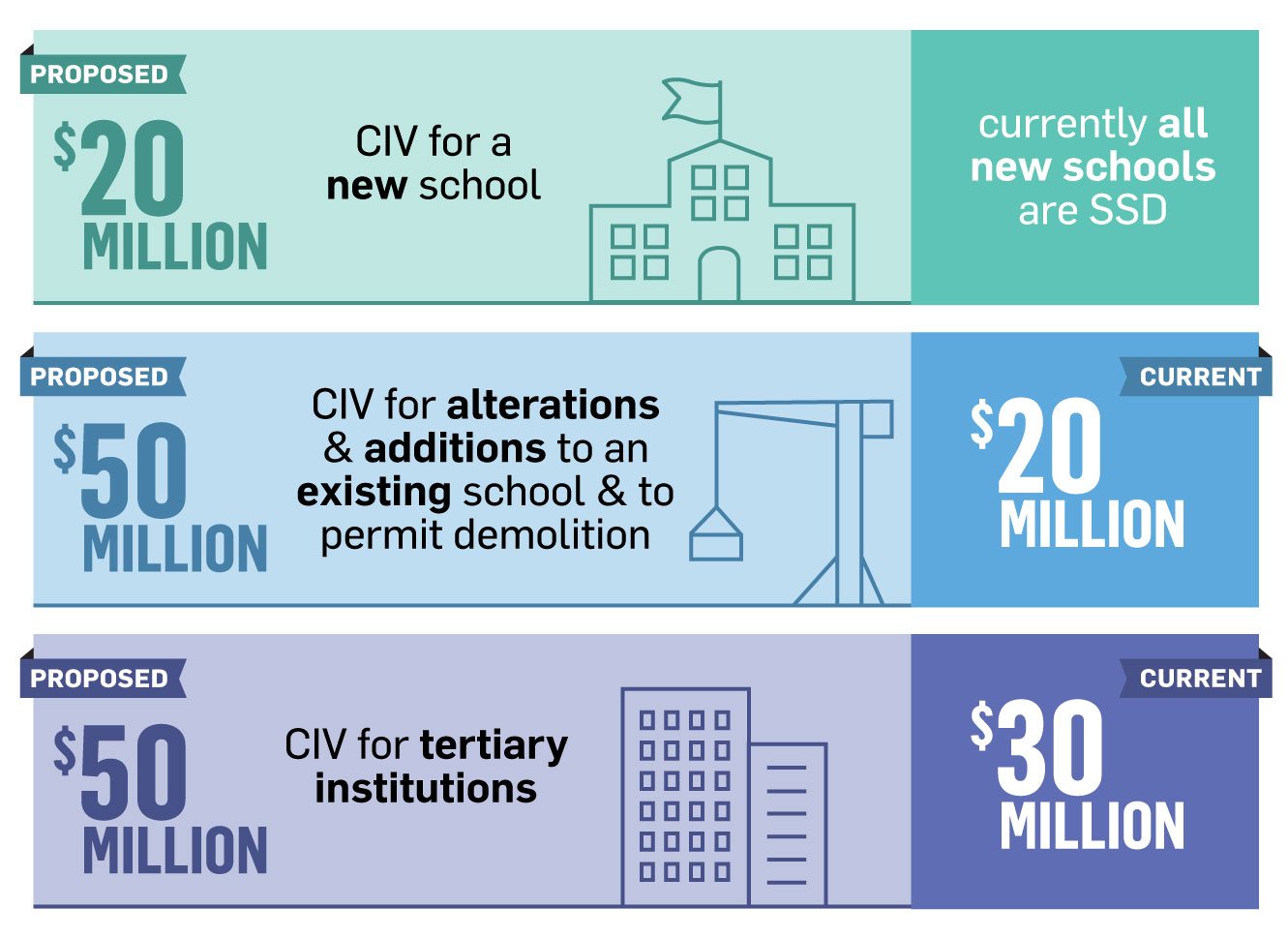The $20 million threshold for new schools will likely allow temporary demountable schools to pop up while the permanent school goes through the SSD process. Smaller schools, particularly in the regions, will go through a local DA process.
The increase in CIV for school alterations and additions and tertiary institutions is a double-edged sword. Sure, more projects could be complying development and fewer projects will be SSD which should shorten approval timeframes. However, those projects in between will need to go through a local DA process.
There is a risk of delays or rejection where the relevant local Council or community may have taken a historical position of opposition. The Education SEPP does not factor in these roadblocks to some projects that would otherwise provide a significant regional contribution. A safety net of State-level assessment and determination for these types of projects should be explored within the legislation.
Expanding permissibility and planning pathway opportunities
- Include Innovation Hubs as a permissible development within existing tertiary institutions.
We welcome the recognition of the role that innovation and related commercial activity plays within the tertiary sector through broader permissibility opportunities on university campuses. We encourage the inclusion of residential accommodation as part of innovation hubs. Allied accommodation co-located with commercial spaces would provide greater competitive positioning and activity associated with these hubs.
- Raise the height limit for development without consent provisions for schools, universities and TAFEs from one storey to two storeys.
While this is a gain, larger school sites and TAFE and university campus contexts provide greater scope for more building height and mass to be development without consent. A merit-based approach would be more appropriate for buildings without any direct or nearby residential interface. This same approach should be considered for complying development pathways.
- Change student cap restrictions for development without consent, to be the equivalent to an additional classroom (30 students) or 10% of the student and staff numbers, whichever is the greater. The current cap is10%.
This will benefit smaller regional schools with low enrolment numbers where a 10% cap permits very minimal growth. We would suggest that the cap for development without consent should be reconsidered entirely, particularly given the proposal to increase single storeys to two storeys. The two provisions are counter intuitive.
Why have caps at all? The Department’s Planning Circular for development assessment of schools (supporting the Education SEPP) encourages impacts of school population to be mitigated directly, rather than with arbitrary caps on student numbers. However, Councils and The Department continue to condition student caps, creating uncertainty in the strategic planning for schools and adding risks of modifying or removing caps through statutory approvals.
This is particularly unjustified for schools that provide effective traffic management procedures for student growth. The Education SEPP should directly reference the Planning Circular to give greater statutory strength to its principles. This will provide decision-makers with greater guidance and Schools with greater certainty.
Clarifying confusing provisions
- Off-site new school campus or recreational facility is to be assessed as a new school rather than an alteration or addition.
- Classrooms captured as a teaching facility.
- Both cafeterias and canteens are permitted as complying development.
- An educational establishment is permitted with consent on land adjacent to State land containing an existing educational establishment.
- Remove anomalies in provisions relating to boundaries, landscaping, earthworks, noise, and waste.
- Student housing that is ancillary to any SSD proposal for an educational establishment will be assessed as SSD but standalone student housing within the boundaries of an existing educational establishment will not be SSD, irrespective of CIV.
- Introducing minimum separation distances between child care centres within Low Density Residential zones – R2.

